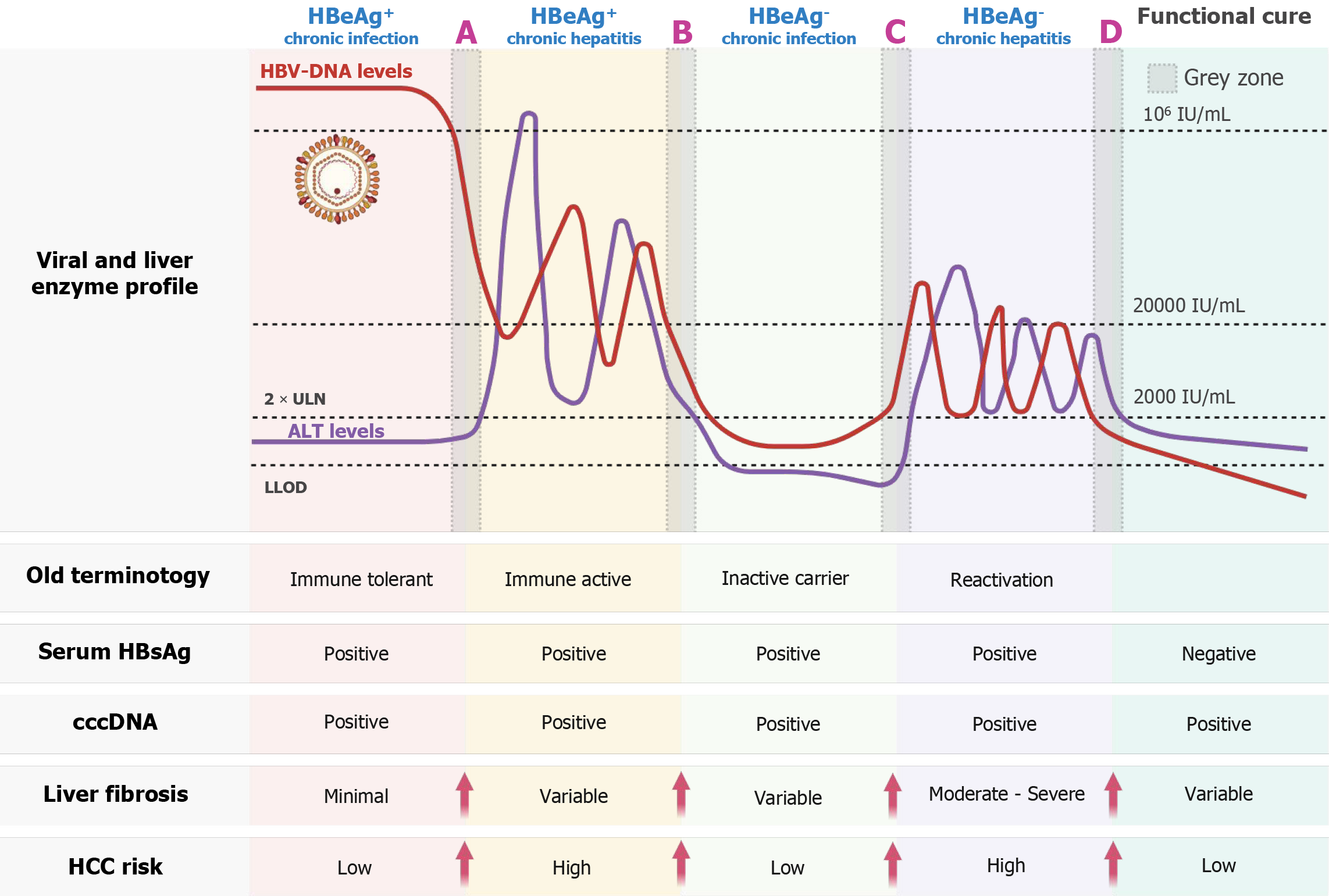Copyright
©The Author(s) 2025.
World J Hepatol. Oct 27, 2025; 17(10): 107735
Published online Oct 27, 2025. doi: 10.4254/wjh.v17.i10.107735
Published online Oct 27, 2025. doi: 10.4254/wjh.v17.i10.107735
Figure 1 Integration of gray zone subgroups within the updated natural history framework of chronic hepatitis B.
This schematic integrates the classification of gray zone (GZ) subgroups (A–D) within the updated natural history framework of chronic hepatitis B, which comprises four clinical phases: (1) HBeAg-positive chronic infection; (2) HBeAg-positive chronic hepatitis; (3) HBeAg-negative chronic infection; and (4) HBeAg-negative chronic hepatitis. Each GZ subgroup is delineated according to specific combinations of HBeAg status, HBV DNA levels, and ALT activity, highlighting the underlying biological and prognostic heterogeneity among GZ patients. A–D correspond to the four GZ subgroups: GZ-A (HBeAg-positive, normal ALT, HBV DNA ≤ 106 IU/mL), GZ-B (HBeAg-positive, elevated ALT, HBV DNA ≤ 2 × 104 IU/mL), GZ-C (HBeAg-negative, normal ALT, HBV DNA ≥ 2 × 103 IU/mL), and GZ-D (HBeAg-negative, elevated ALT, HBV DNA ≤ 2 × 103 IU/mL). ALT: Alanine aminotransferase; cccDNA: Covalently closed circular DNA; HBeAg: Hepatitis B e antigen; HBsAg: Hepatitis B surface antigen; HBV: Hepatitis B virus; HCC: Hepatocellular carcinoma; LLOD: Lower limit of detection; ULN: Upper limit of normal.
- Citation: Viet Luong T, Phan Hong Nguyen N, Nguyen TV, Tran DH, Dinh Nguyen T, Nguyen Ngoc Dang H. Gray zone and the need for expansion in chronic hepatitis B: From theory to clinical practice. World J Hepatol 2025; 17(10): 107735
- URL: https://www.wjgnet.com/1948-5182/full/v17/i10/107735.htm
- DOI: https://dx.doi.org/10.4254/wjh.v17.i10.107735













